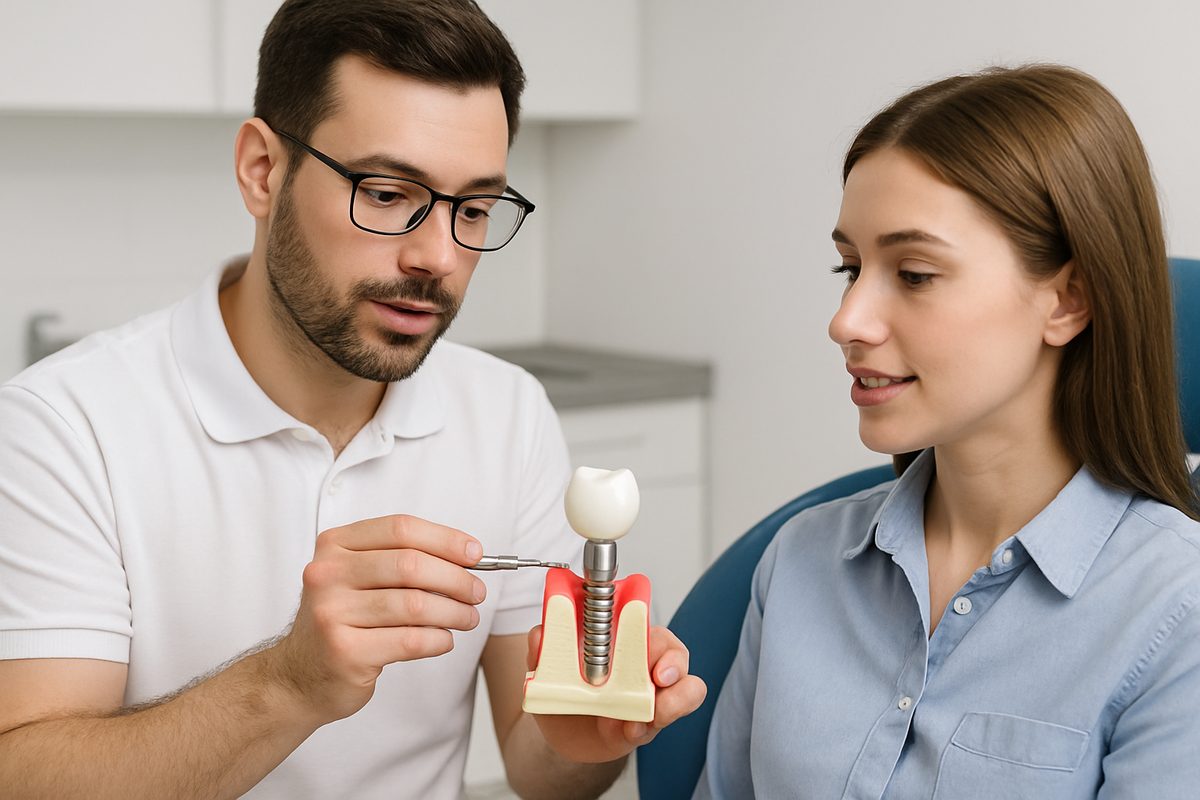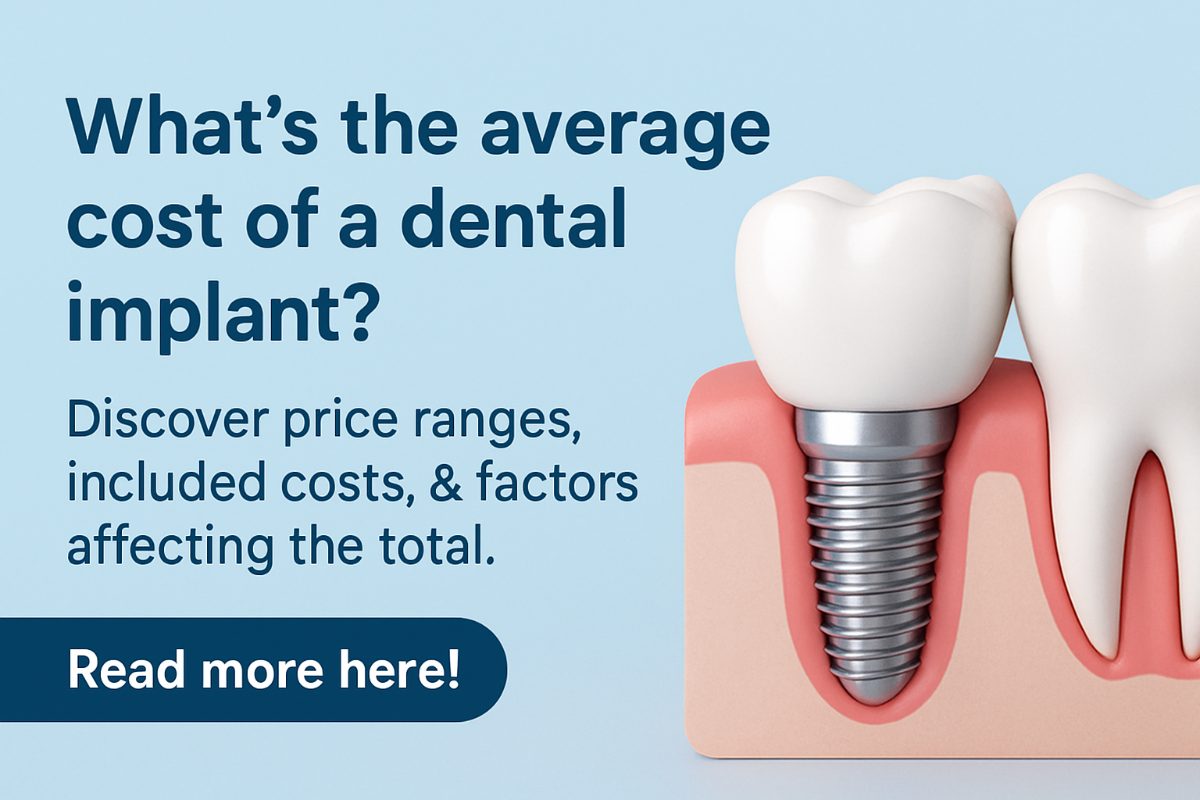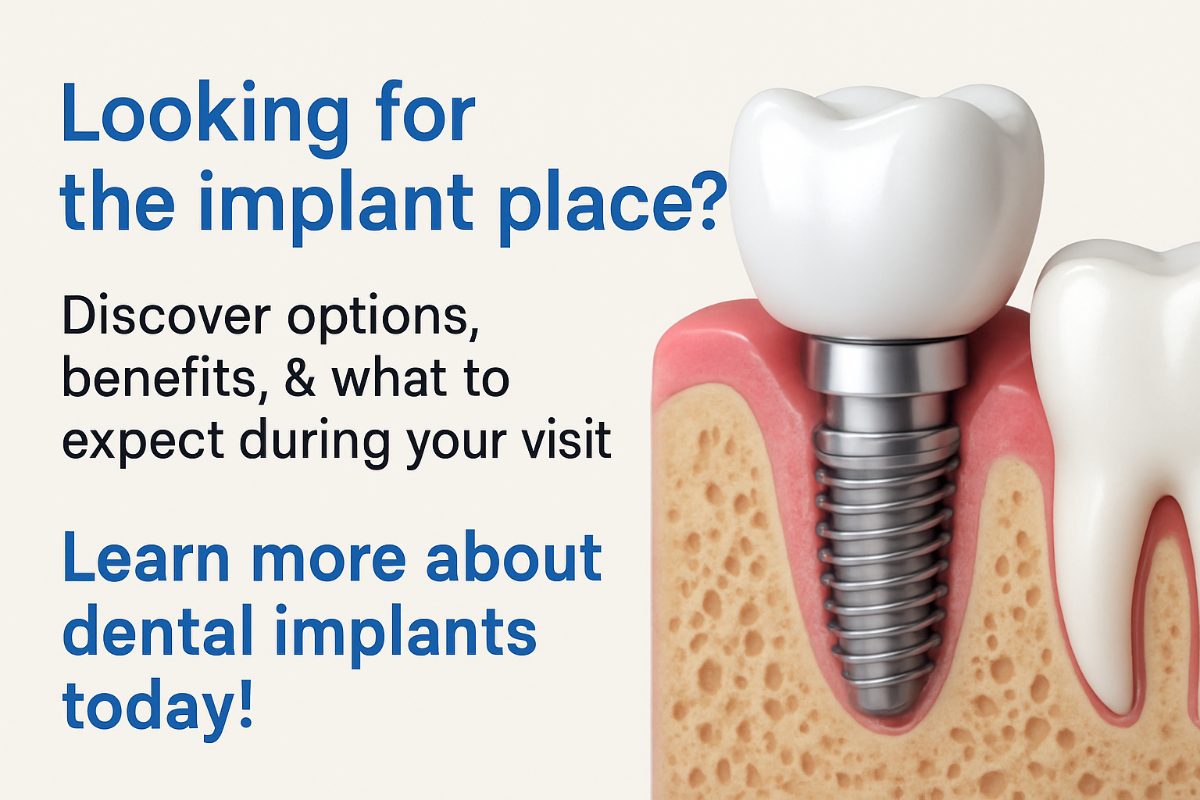Dental Blog - Greater San Antonio
Tips, Facts, And The
Latest In Dentistry

Dental Implants Explained: Your 2025 Guide

Dental implants explained — this guide breaks down what implants are, who benefits, the basic steps of treatment, typical costs, and clear next steps. You’ll get simple definitions, common options, what to expect during surgery and recovery, plus tips for choosing a provider.
This is for anyone weighing implants versus dentures or bridges, or for people curious how modern implant care works. Read on to learn practical facts and decide if a consultation makes sense for you.
What Are Dental Implants? — dental implants explained
A dental implant is a man-made tooth root placed in your jaw to hold a replacement tooth or bridge. It acts like a natural tooth root so the replacement looks, feels, and works like a real tooth.
The three main parts:
- Implant post: a titanium screw placed into the jaw.
- Abutment: a connector that joins the post to the crown.
- Crown: the visible tooth placed on top of the abutment.
Common types of implants
Endosteal implants are the most common and sit directly in the jawbone. Subperiosteal implants sit on top of the bone under the gum and are used when bone is low. Full-arch options (for a whole row of teeth) use multiple implants to support a bridge — often called “all-on-4” or similar approaches.
Who Is a Good Candidate?
Good candidates are adults with healthy gums, enough jawbone to hold the implant, and controlled chronic conditions. Non-smokers or people willing to quit have better outcomes. Age alone is not a barrier.
When implants might not be right
Implants may not be the best choice if you have untreated gum disease, severe bone loss without willingness for grafting, certain uncontrolled medical conditions, or heavy smoking. Alternatives include removable dentures, fixed bridges, or mini-implants for specific cases.
Step-by-Step: How the Procedure Works
Consultation and planning
Your dentist will take X-rays or a CBCT scan, review medical history, and create a treatment plan. This visit defines how many implants you need, whether grafting is required, and an estimated timeline.
Surgery and healing
Surgery places the implant posts into the jaw. Healing takes weeks to months while bone bonds to the post (osseointegration). You’ll have follow-up visits to check healing and comfort.
Final restoration
Once healed, the abutment and crown are attached. Your dentist will adjust the fit, bite, and appearance to make sure the tooth looks natural and functions well.
Benefits and Risks
- Improved chewing and speech
- Natural look and long-term durability
- Helps preserve jawbone and facial structure
- No need to alter healthy adjacent teeth
Potential complications and how common they are
Complications are uncommon but can include infection, implant failure, or nerve irritation. Risks drop when you work with an experienced provider, maintain good oral hygiene, stop smoking, and follow post-op directions. Most patients heal without major issues.
Costs, Insurance, and Financing
Cost factors: number of implants, need for bone grafts or extractions, implant brand and material, and regional pricing. A single implant with crown typically costs more than a bridge but lasts longer.
Ways to afford implants
Dental insurance may cover part of the restoration but often not the full implant cost. Options include dental loan plans, monthly payment plans through the practice, health savings accounts (HSAs), and third-party financing. Ask your provider for a written estimate and financing options.
How To Choose a Provider
Look for providers with clear implant experience, before-and-after photos, patient reviews, and modern tech (CBCT, digital planning, intraoral imaging). Verify referrals and ask about success rates and follow-up care policies.
About Elite Dental & Implant Center: Elite Dental serves Greater San Antonio with offices in San Antonio, Pleasanton, and New Braunfels. The practice is led by Dr. Mohan Jaganathan and Dr. Veena Raja and uses CBCT, digital X-rays, and an on-site lab to streamline care.
Questions to ask at your first visit
- Am I a good candidate and why?
- What is the full treatment timeline?
- What are the success rates and possible complications?
- Do you offer financing or payment plans?
Quick FAQ — dental implants explained
Does it hurt? Local anesthesia and sedation options keep pain low. Mild soreness after surgery is normal and manageable with medication.
How long to heal? Initial healing is a few weeks; full osseointegration often takes 3–6 months.
How long do implants last? With good care, implants can last decades — many function for life.
Are implants safe for older adults? Yes; age alone isn’t a barrier. Health and bone quality matter more than age.
Conclusion and Next Steps
Dental implants explained simply: they replace missing teeth with a durable, natural-feeling solution that preserves bone and restores function. If you’re considering implants, schedule a consultation to get a personalized plan and cost estimate. Elite Dental & Implant Center offers consultations at their Greater San Antonio locations and can discuss options, technology, and financing to help you decide.





